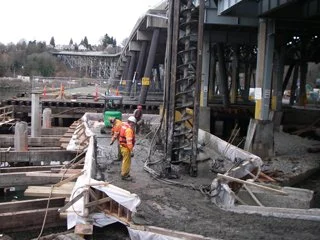
The Magnolia Bridge
The Magnolia Bridge stands as a vital link between the Magnolia neighborhood and the Seattle city core, spanning the picturesque Elliott Bay. Originally constructed in 1929 and rebuilt in 2001, this iconic structure offers stunning panoramic views of the Seattle skyline and Mount Rainier. Its historical significance and architectural charm has made it a beloved landmark, facilitating essential transportation while serving as a symbol of community connectivity and resilience in Seattle's urban landscape.
Historic Timeline
A history of the Magnolia Bridge
The importance of Magnolia’s bridges.
Magnolia is a peninsula located at the northwest edge of Elliott Bay, approximately five miles from downtown Seattle. With a population of approximately 25,000 residents, Magnolia is connected to Seattle by three bridges: Emerson, Dravus, and Magnolia, all of which cross BNSF rail lines. Our community includes a variety of businesses and residents representing a wide range of economic backgrounds.
Three bus routes operate across the Magnolia Bridge, while one utilizes Emerson Bridge. Within Magnolia, there are three fully-enrolled Seattle Public Schools facilities. Noteworthy landmarks include the 534-acre Discovery Park and the Daybreak Star Indian Cultural Center. Surrounded by the Port of Seattle to the south and east, as well as Fisherman’s Terminal to the north, Magnolia faces the unique challenge of lacking water-based transit options for both regular and emergency transport needs.
The Magnolia Bridge’s repair summary.
Chronology of Magnolia Bridge constructions and repairs, 1929-2001 Nisqually earthquake
SDOT Summary of federally funded Type, Size and Location Magnolia Bridge Replacement Study completed according to NEPA, following Nisqually earthquake
2015 Environmental Assessment for Preferred Alternative (in-kind) replacement
2020 Ballard-Interbay Regional Transportation (BIRT) System Study report to Legislature
2020 Sept. 11, 2020, SDOT: Strategic Approach to Vehicle Bridge Maintenance Seattle City Council Transportation Committee Seattle’s bridge’s audit.
The Magnolia Bridge’s repair summary.
Chronology of Magnolia Bridge construction and repairs, 1929-2001
SDOT Summary of federally funded Type, Size and Location Magnolia Bridge Replacement Study completed according to NEPA, following the Nisqually earthquake
2015 Environmental Assessment for Preferred Alternative (in-kind) replacement
2020 Ballard-Interbay Regional Transportation (BIRT) System Study report to Legislature
Sept. 11, 2020, SDOT: Strategic Approach to Vehicle Bridge Maintenance Seattle City Council Transportation Committee Seattle’s bridge’s audit
MCC’s Assessment of the current status of the Magnolia Bridge Replacement.
MCC and its Board of Trustees agree with this Seattle Times editorial: “When you know the roof will fail in a few years, you start saving to replace it”. Seattle procrastinated with the Magnolia Bridge and now the city is writing studies to justify abandoning the ‘roof’ and getting by with a ‘blue tarp’.
Following a six-year, federally funded, SDOT-led process that examined replacing the Magnolia Bridge after the Nisqually earthquake (2006) Seattle’s then Mayor Nickels and SDOT designated a 1:1 (In-Kind) replacement for the Magnolia Bridge a Preferred Alternative with 30% engineering, a draft Environmental Assessment, and no funding plan.
In May 2015, SDOT, WSDOT, and FHWA signed off on the updated Environmental Assessment.
The 2015 Move Seattle Levy included funding to look at emergency planning in the event of a Magnolia Bridge failure. SDOT used this funding to examine alternatives that did not include the 1:1, In-Kind replacement. Magnolia organized and raised enough concern that SDOT put In-Kind replacement back on the table, but it was not examined equally. SDOT clearly preferred an Armory Way alternative, and weighted assessments for that outcome. To that end, the In-Kind replacement was treated as an inferior option despite the fact that community, Port of Seattle, Sound Transit, and BNSF rated it highest.
In 2019, WA-State Legislature allocated $750K to examine the Ballard Interbay Regional Transportation System study (BIRT), specifically to include evaluating Magnolia and Ballard Bridge replacements.
In BIRT (2020), SDOT again downplayed community input in favor of an Armory Way alternative; the final report neither accurately captured a full historical perspective that previously designated 1:1 (In-Kind) replacement as a Preferred Alternative, nor broader communities’ overwhelmingly support for 1:1 (In-Kind) reiterated through the BIRT study process.
As of 2024, MCC has continued to advocate for a in-kind replacement for the Magnolia Bridge, and has worked to ensure Magnolia is represented in the Levy to Move Seattle. Read MCC’s Letter to Bruce Harrell, Select Committee on 2024 Transportation Levy, and SDOT Director, Greg Spotts.
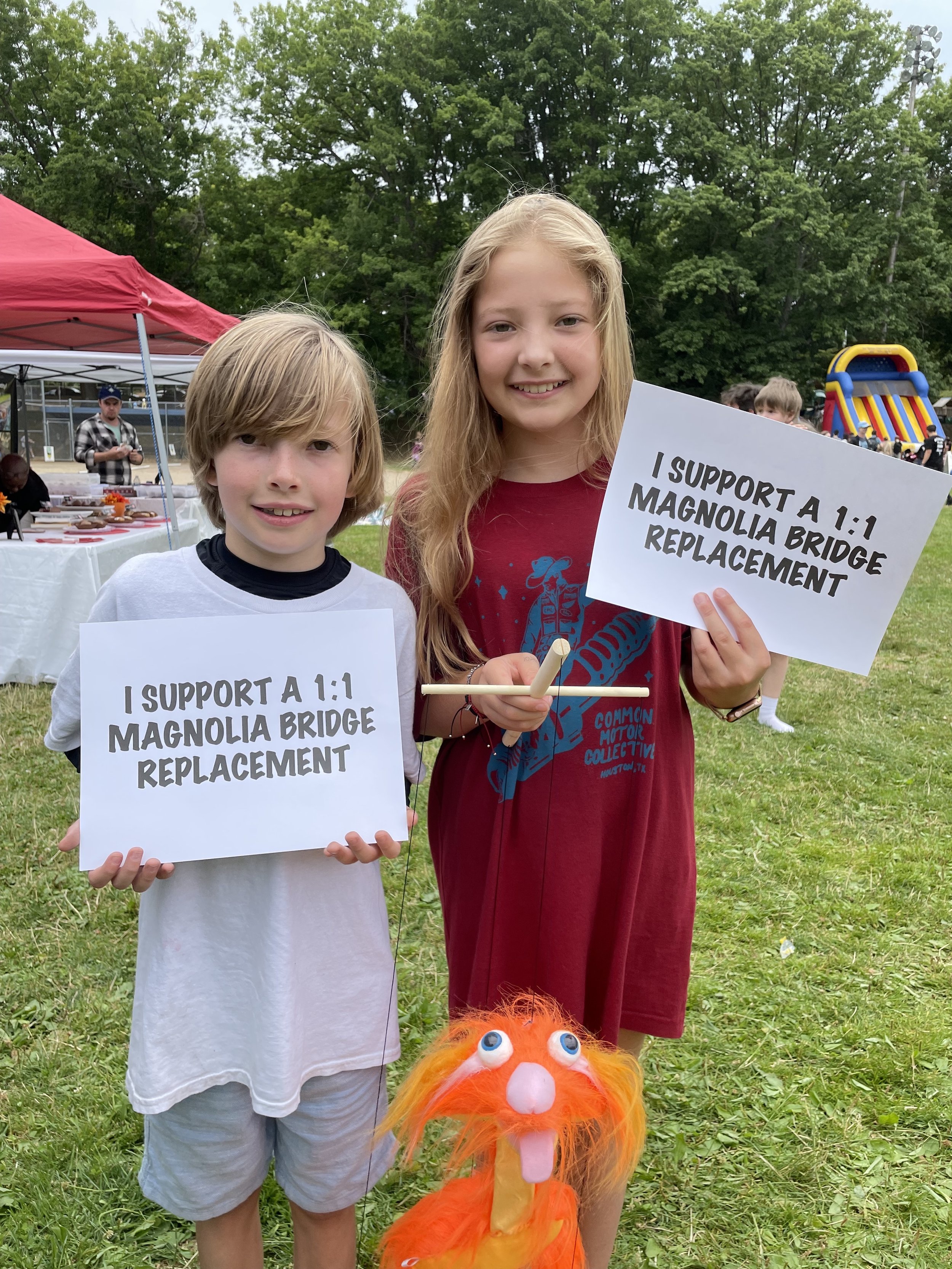
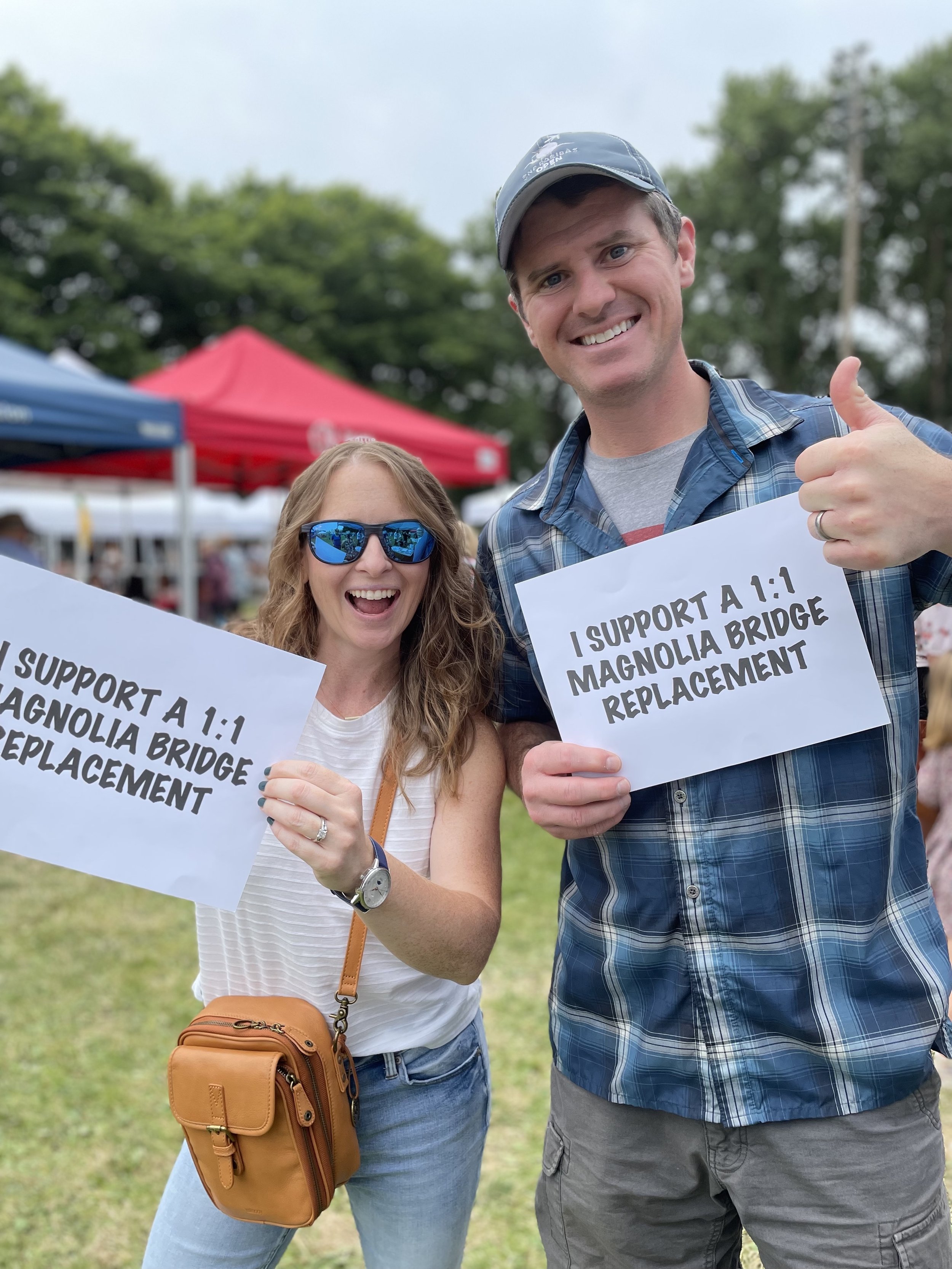
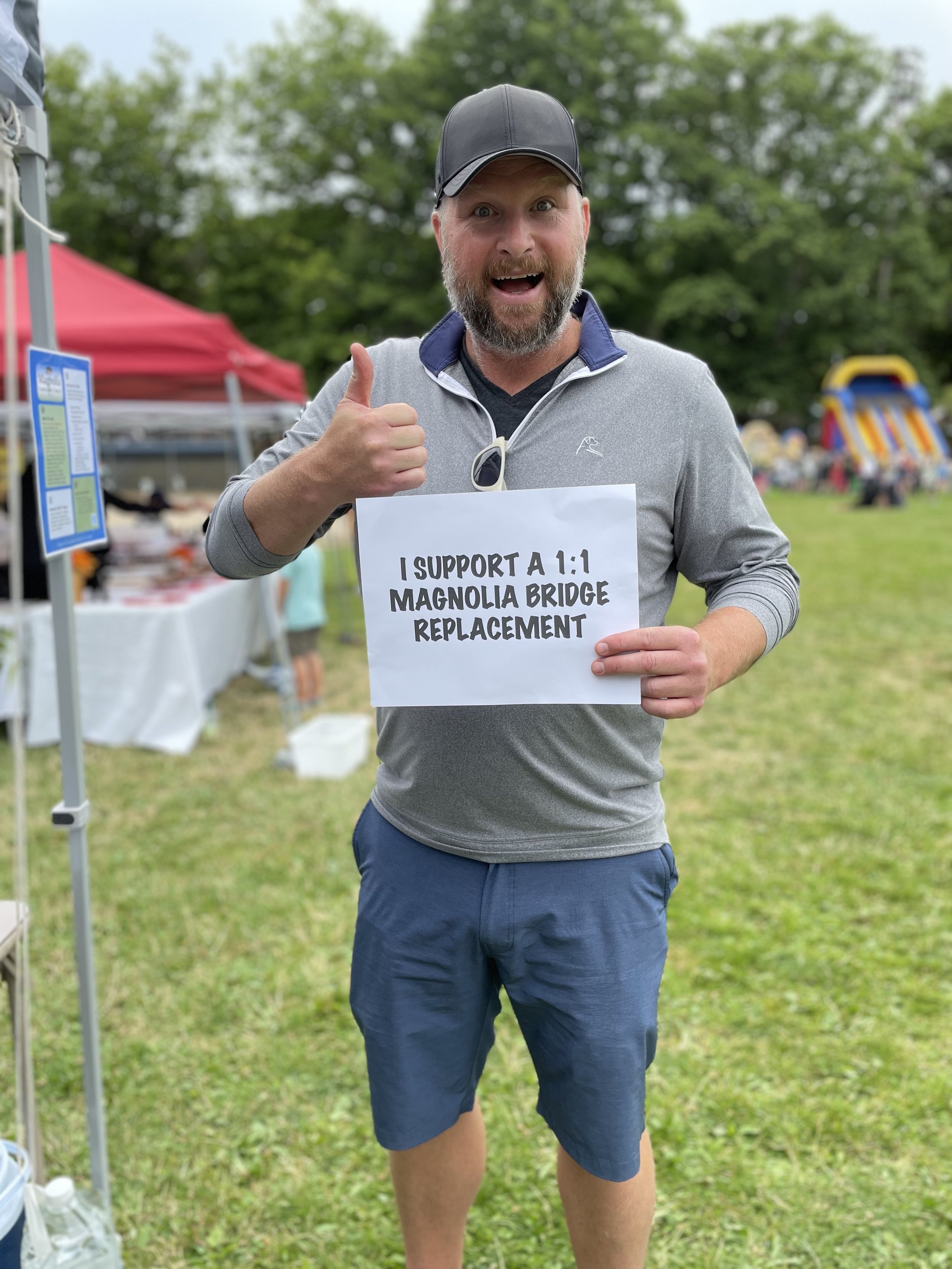

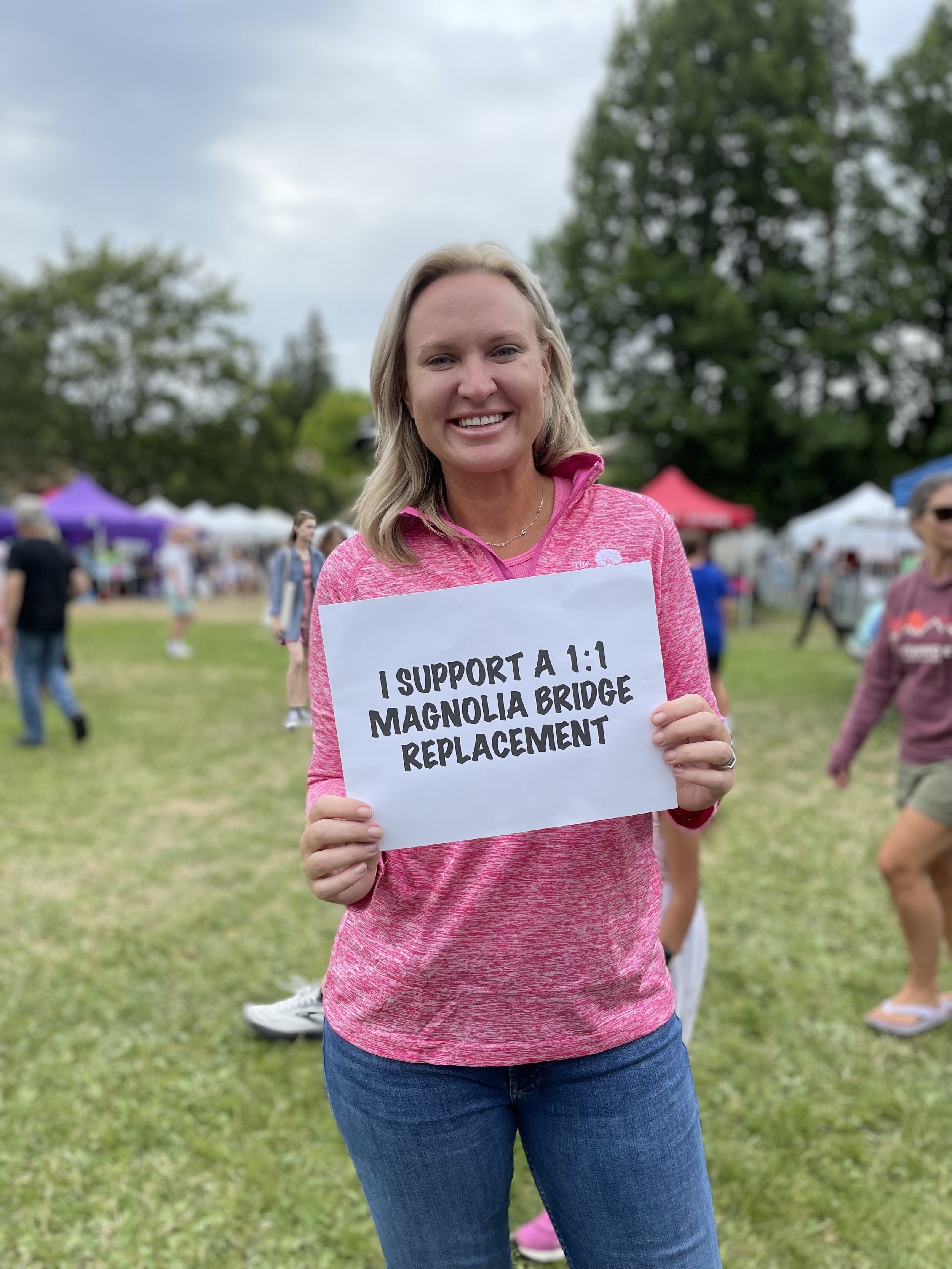
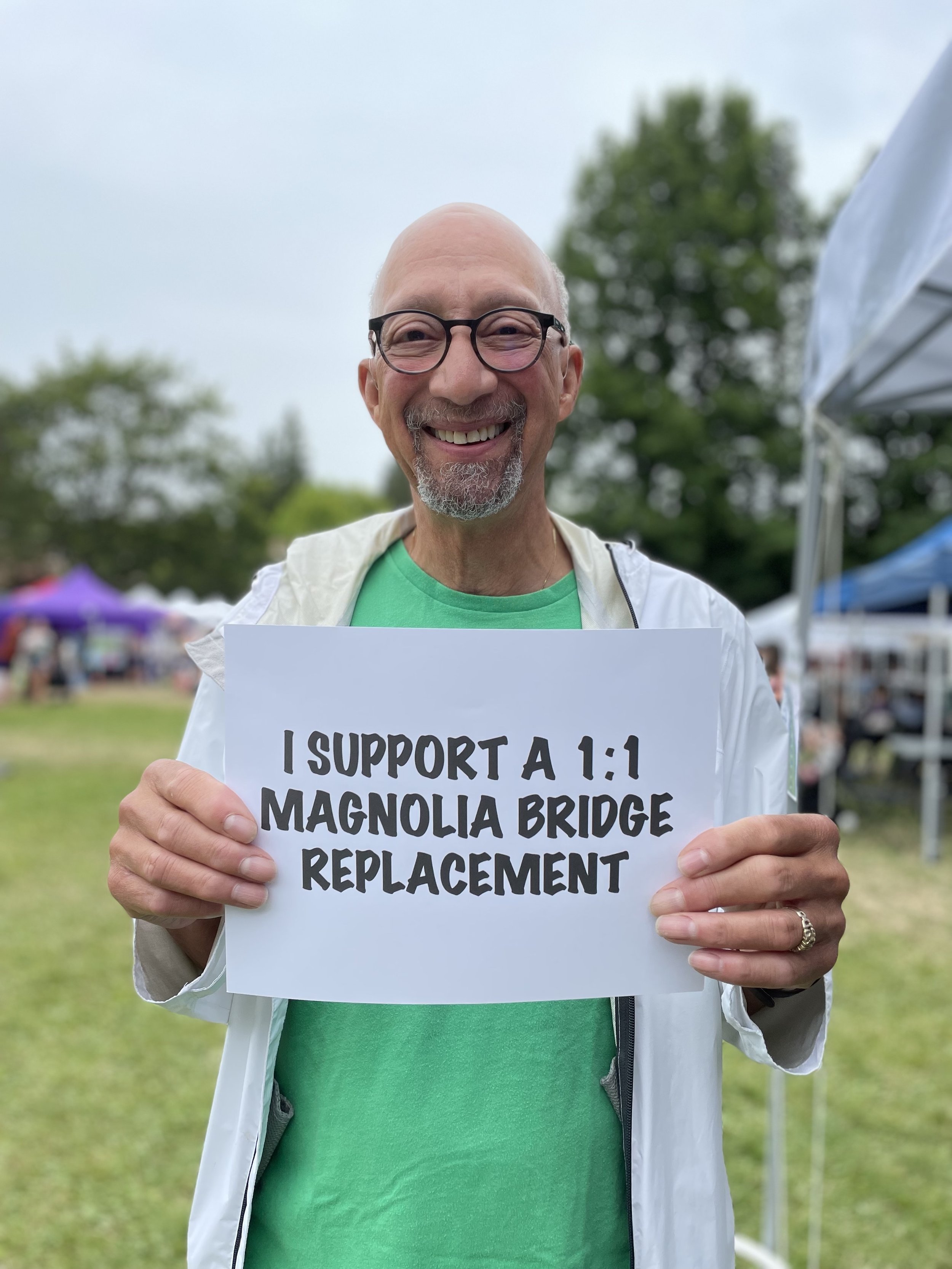
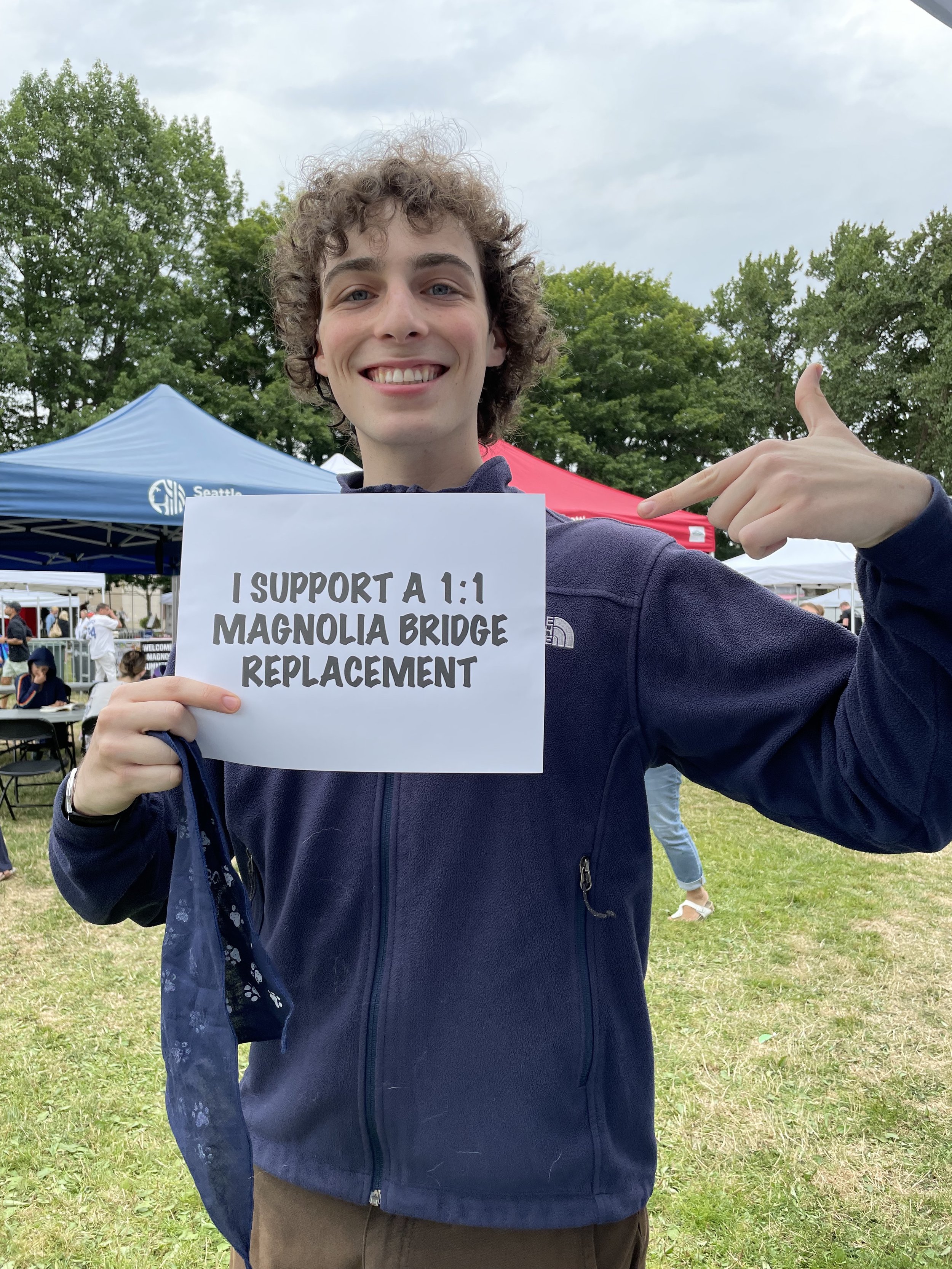
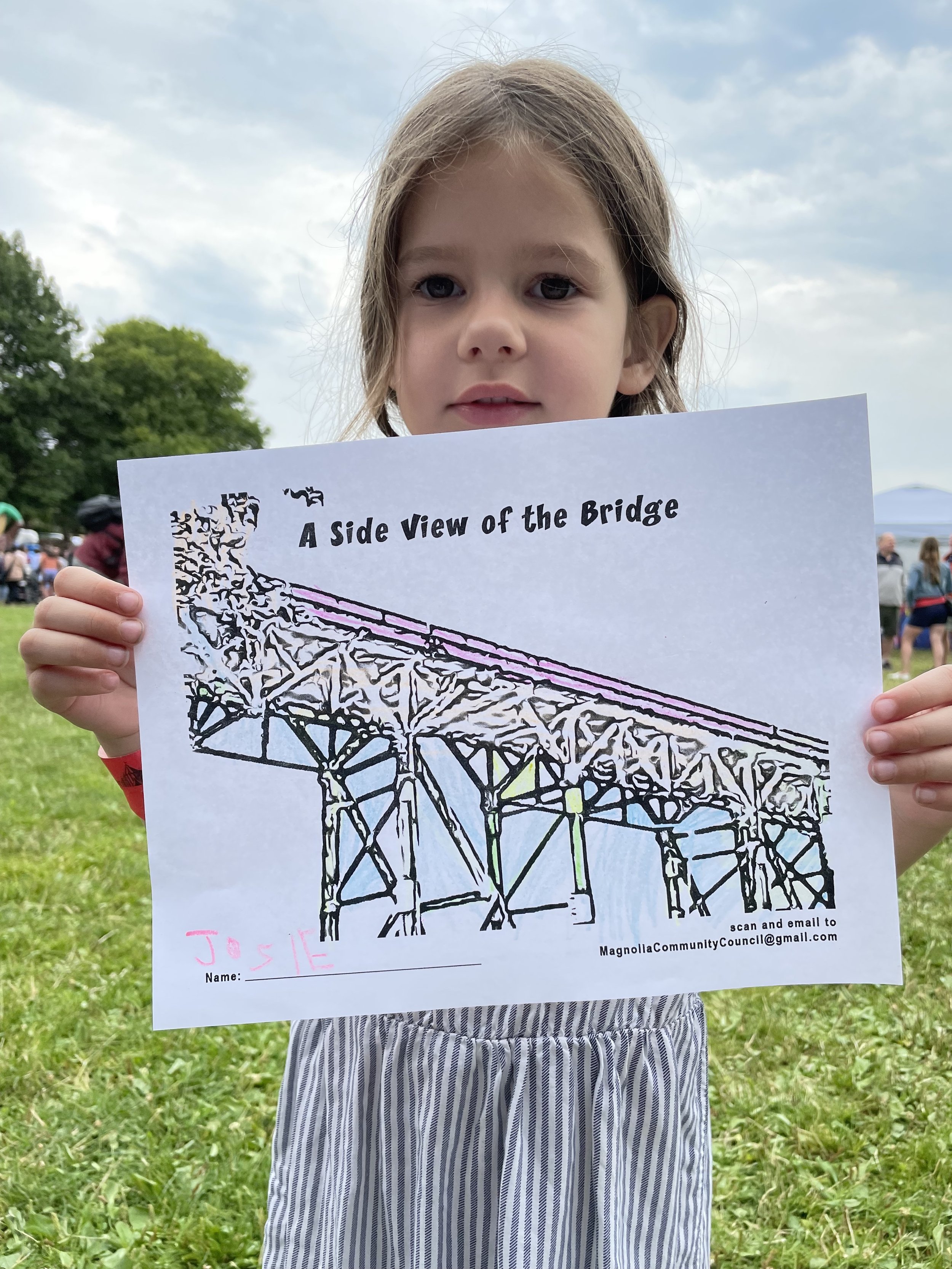
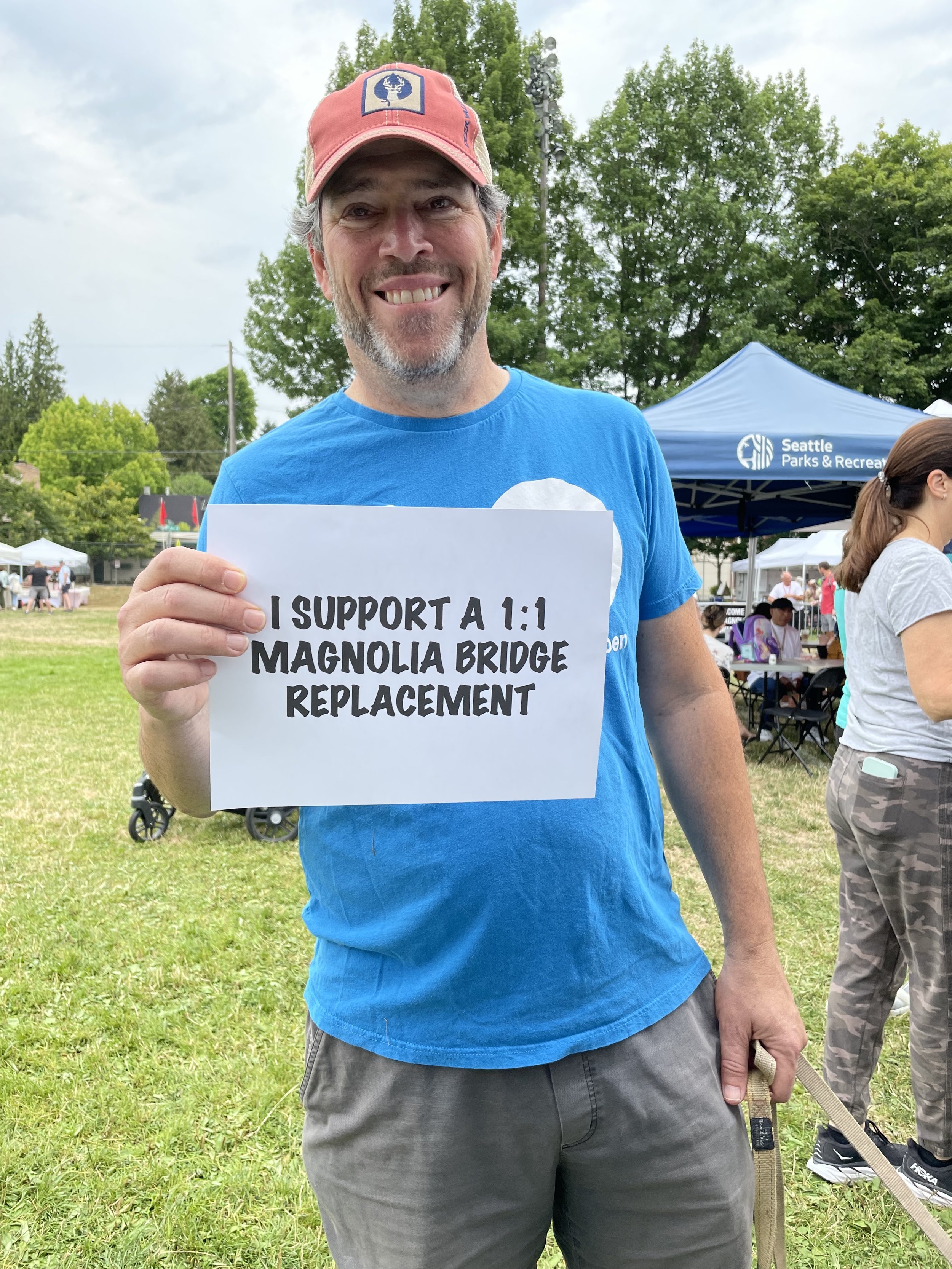
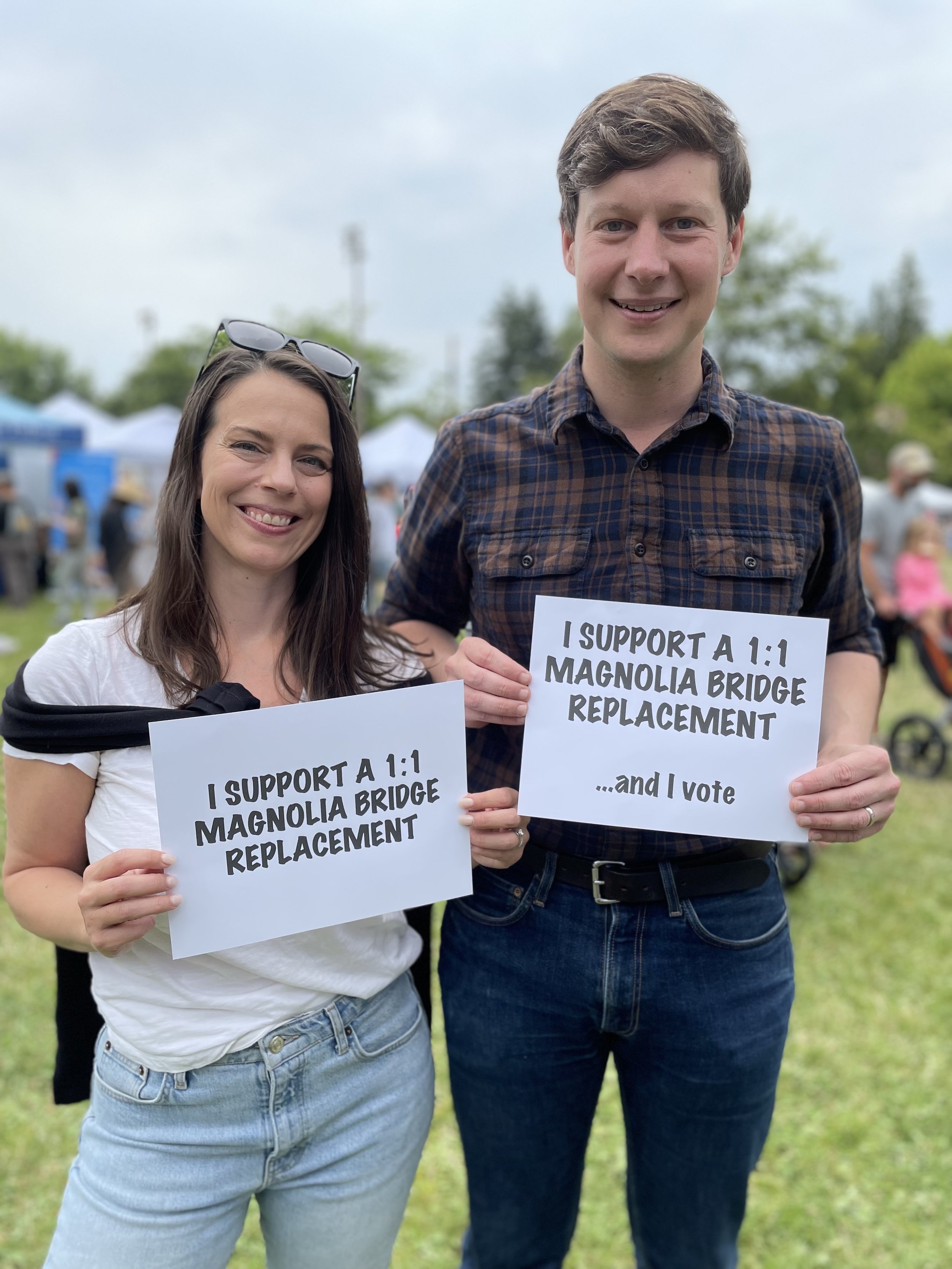




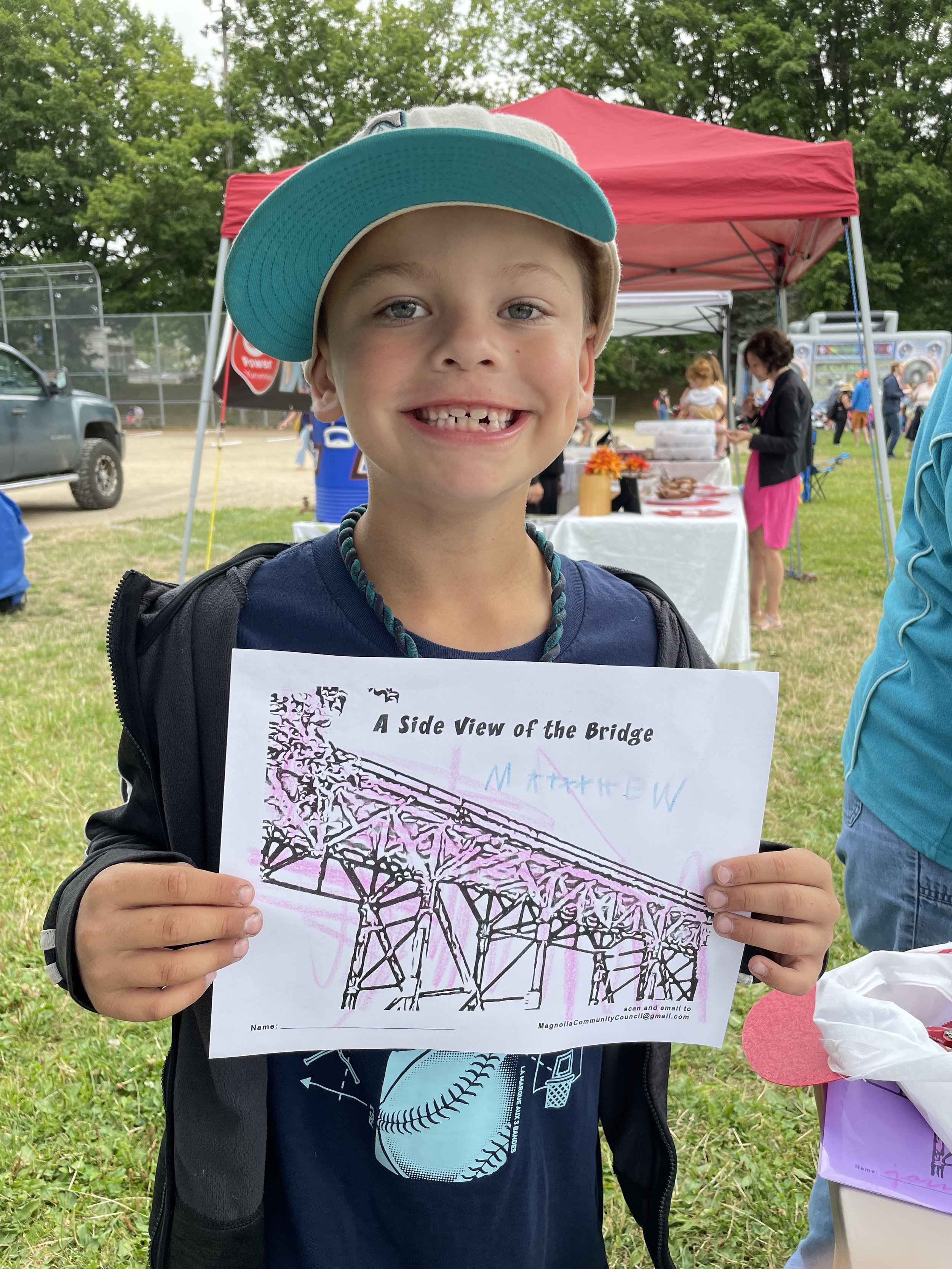
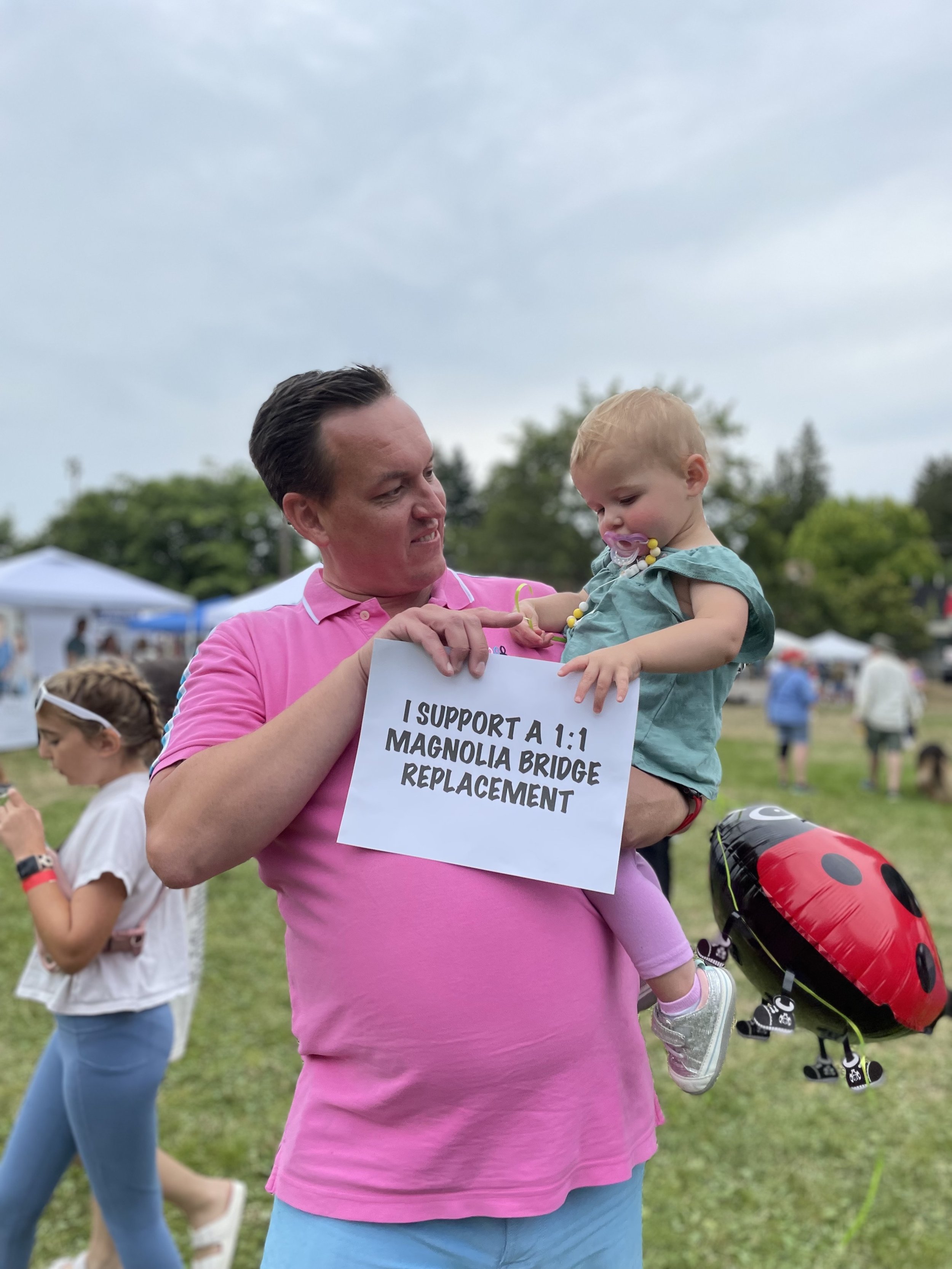
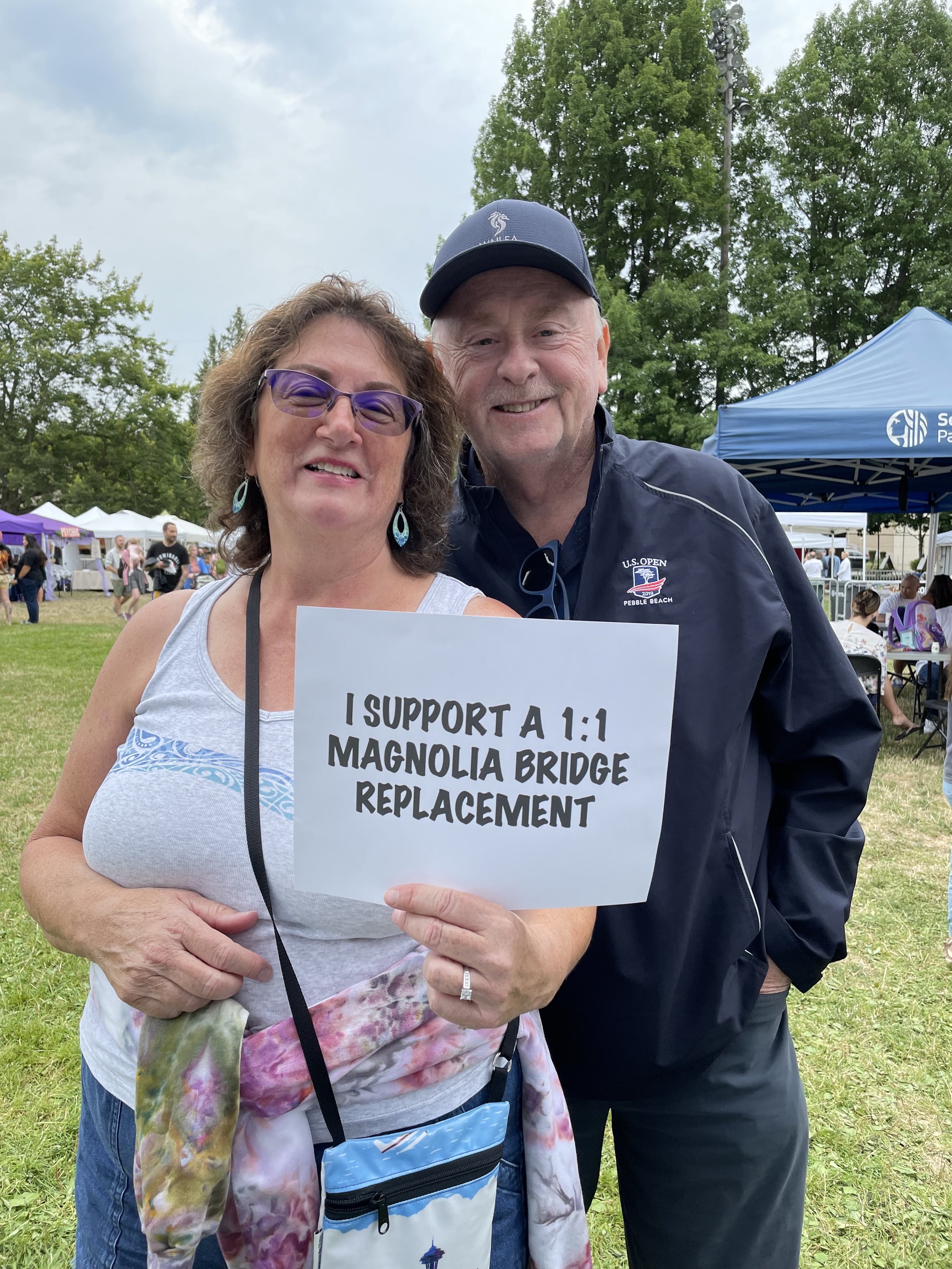
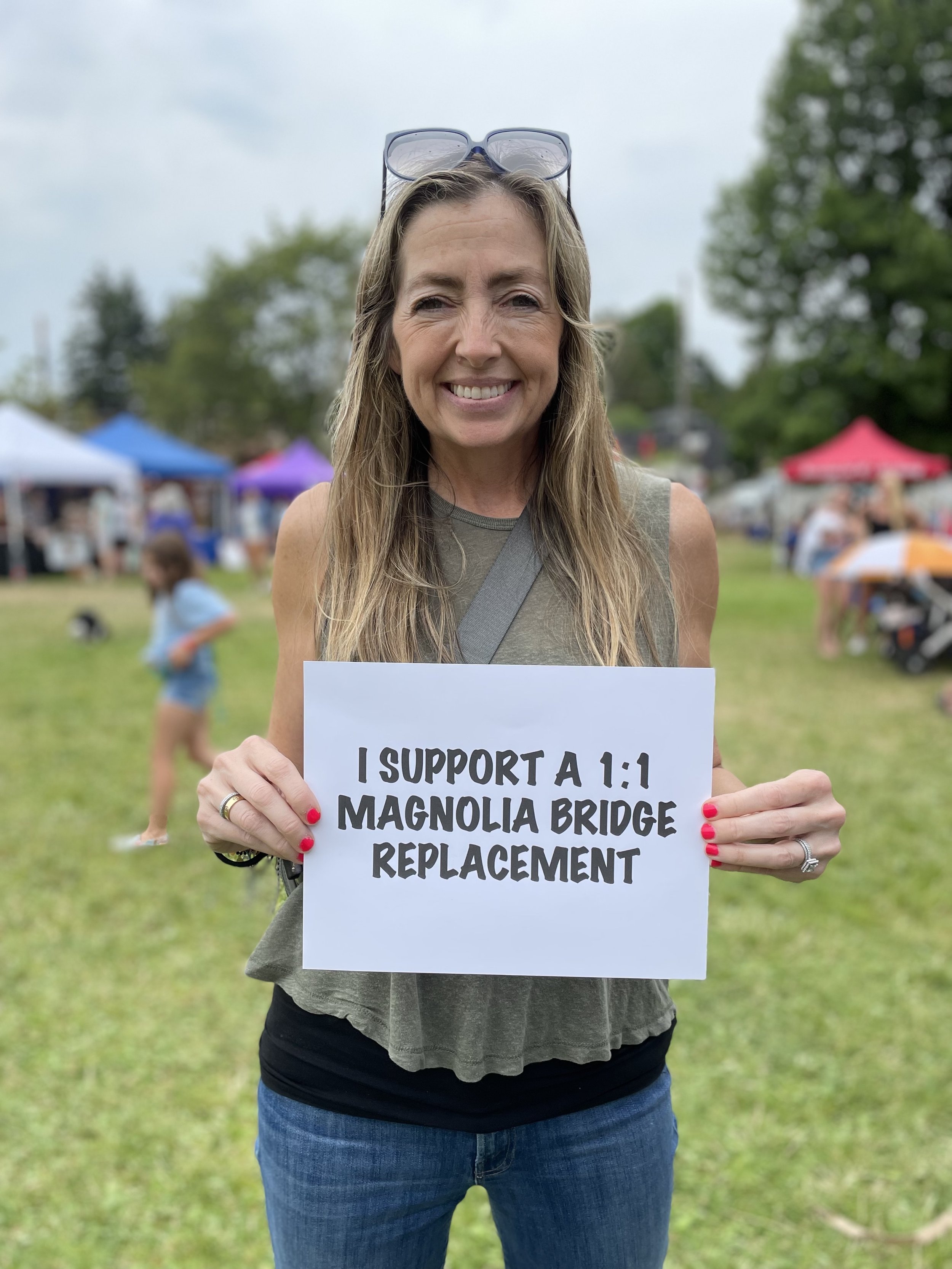
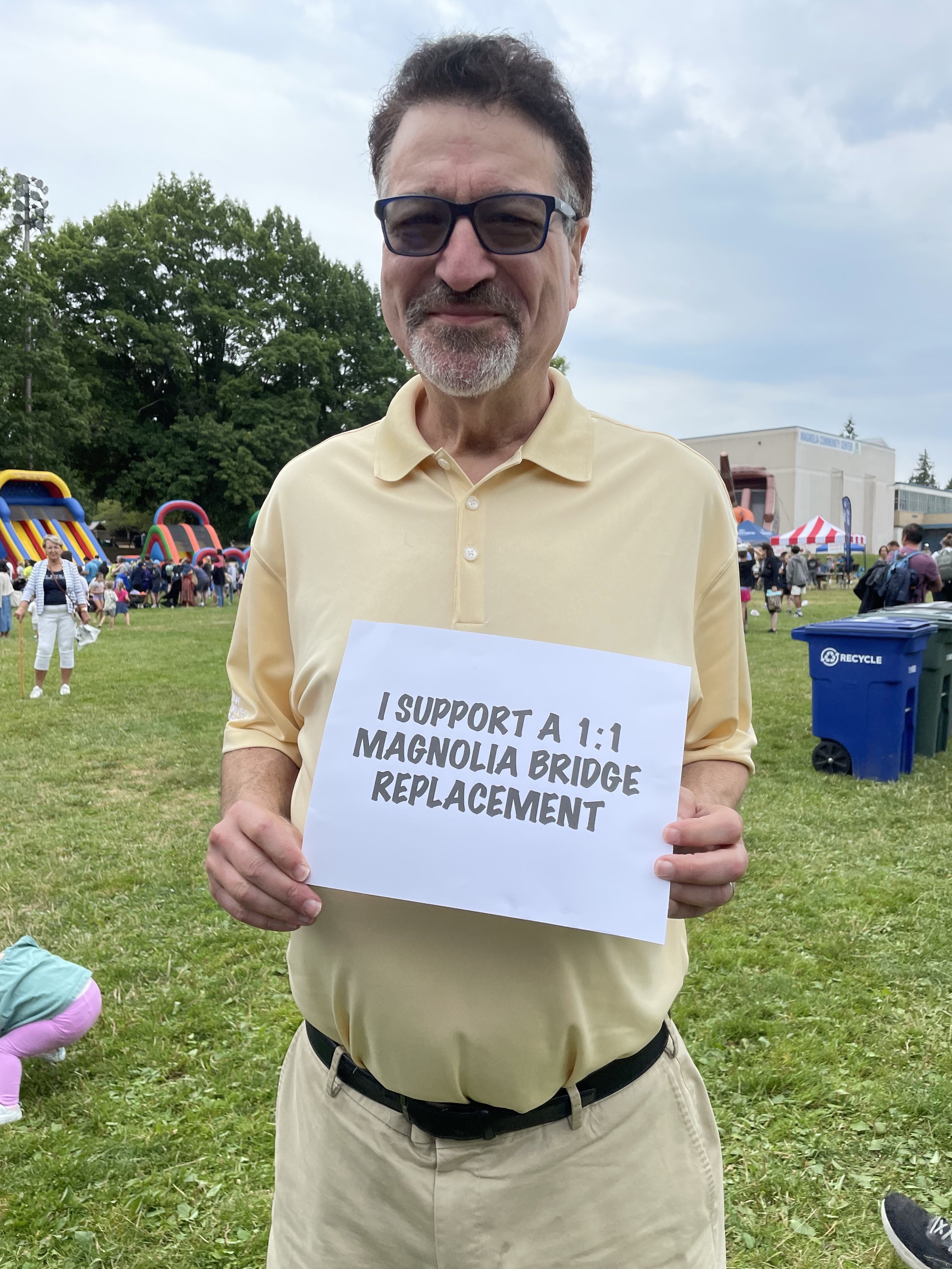
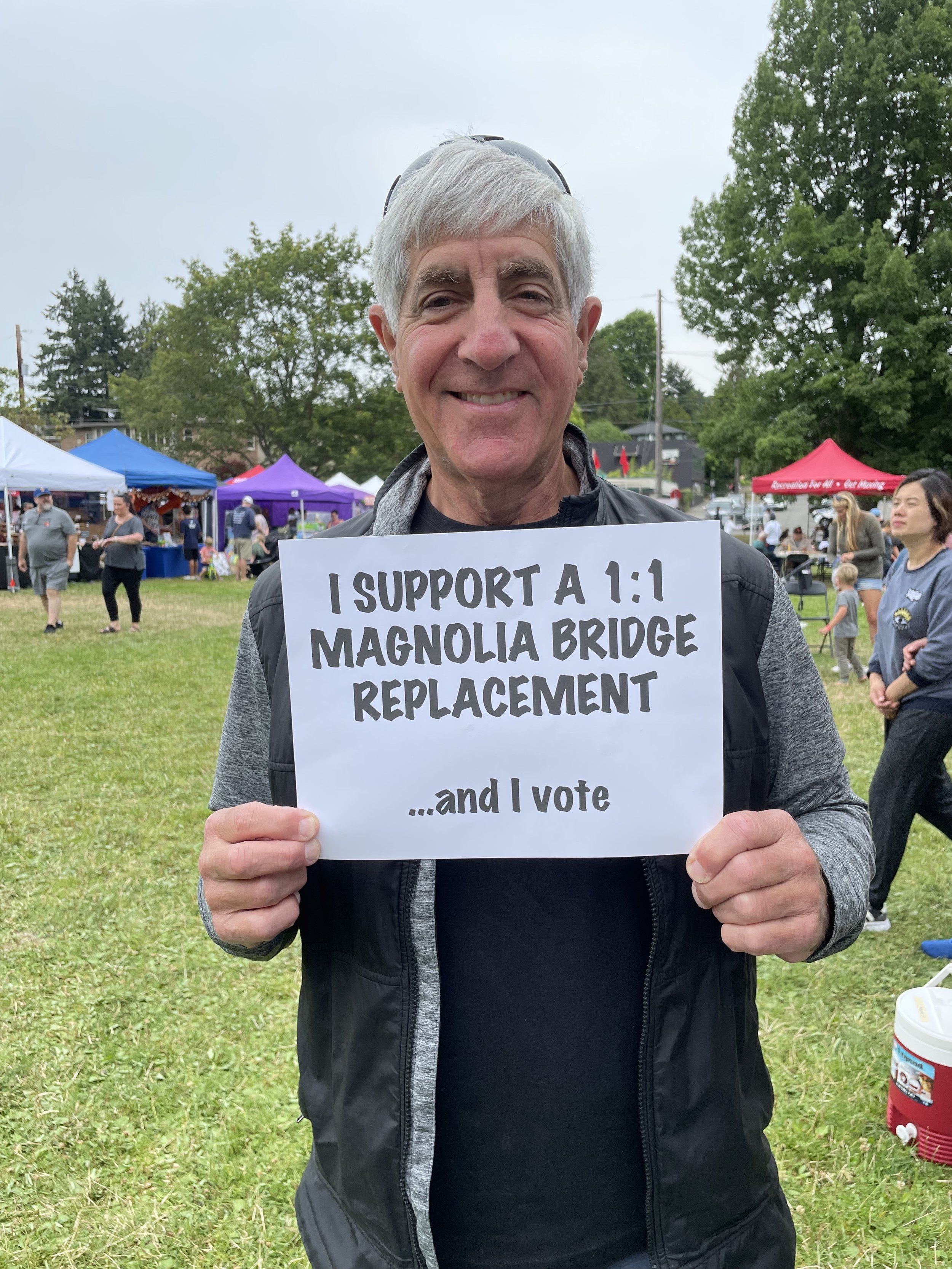
A special thank you to Janis Traven for her 20+ years of advocacy and institutional knowledge of the Magnolia Bridge. And to the Magnolia Historical Society, the Seattle Municipal Archives and Historicalbridges.org for helping us share this story through their photos and historical records.







